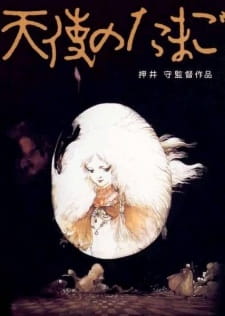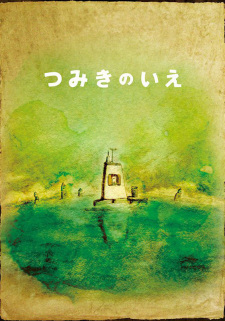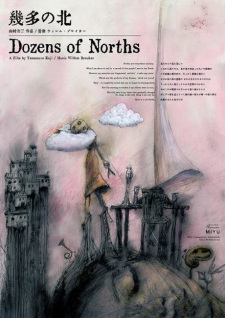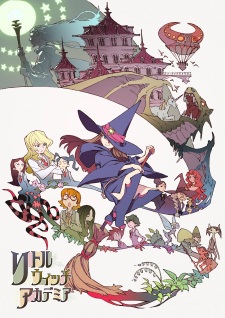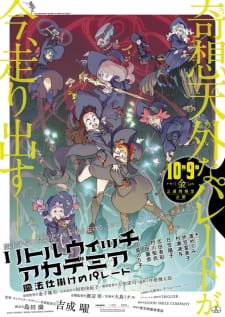May 25, 2019
Mizue Mirai’s animations are noteworthy for creating the sensation of a digital-esque cleanliness, despite being hand drawn. Most of Mirai's works feel like they're proof of concepts, but Wonder feels complete and in my mind is his magnum opus. This film came together when somewhere in 2012 Mirai decided to start drawing one second of a short film every day for a year, with evey day continuing from the last day. Though some parts of the film feel much simpler, as if Mirai was too busy that day to create anything impressive, the vast majoritiy of this film is wonderfully animated, with an enormous amount
...
of different ways Mirai finds to animate different coloured shapes bending, fusing, splitting, appearing and disappearing. Sometimes, when I watch this film, I notice a moment where there is such a wealth of stuff happening at once, that I sit there in wonder: how could Mirai possibly keep track of all this stuff?
When I first watched Wonder I didn’t really get it. I saw a few simple animations and I thought the style was interesting, but I didn’t get what the point was. The music that was playing was abstract and could barely be described as music. This could be said for most of Mirai’s works, except for his music videos. I was starting to get a little bored and as I was debating whether I would be able to sit through all of this, suddenly this goofy ass song started playing and it immediately put a huge smile on my face. It turns out that this anime short film about abstract animation is mostly kept strung together by one of the most fun and wholesome songs I’ve ever heard in my life, and I love it.
Now that I was hearing this lovely song I was instantly hooked and the animations suddenly made a lot more sense to me. Before there had been a few bits of sound that seemed to be timed to work with the animation, but other than that these two elements seemed divorced from each other. Now I was watching a music video, where the music informs the emotions that the visuals portray or enhance. Not only that: there was now a theme. This goofy ass song now conveyed an air of goofy fun; and with that I was hooked on getting to know what out there visuals Mirai could create and let a dense atmosphere of fun wash over me.
When you’re looking at abstract animations like this one, what’s most interesting about them isn’t how different it is from everything else, but what things from real life it decides to keep. Wonder portrays a few things you might recognise: vaguely animal or human like shapes, waves and flowing liquid and most strangely, puking. But the most noteworthy aspect of his style is his constant use of cells. Even if it’s just a strangely shaped splatter of paint, many of Mirai’s creations will have a coloured circle inside a different coloured circle inside of it. Most of these creations are coloured dots with tails that often swim around, so it’s clear they’re meant to look like cells; but he also sometimes uses what somewhat looks like naturalistic pencil drawings of plant cells.
One of my favourite moments in the film is when a couple of green dots bounce around on a black mass of sorts and it both looks like they’re bouncing around on a piece of some elastic material and like they’re sinking into the black mass like your fingers would into a mass of watery foam. How exactly he manages to uphold both these feelings at the same time is still a mystery to me, but perplexing details, that you might not catch on your first watch, are what to me makes Mirai’s style irreplacable.
Later in the film there is a moment where the music changes. Suddenly there is a spooky air to the film and the visuals change to match. Despite me saying that the music is what strings the animation together, the music hasn’t done that great of a job untill this point of matching big changes of what’s happening on screen. It doesn’t quite feel like it was handcrafted to match Mirai’s work. But this change in the music is different and properly signifies a change in theme that the animation was going through.
I call it spooky, but if it’s that, it would be some of the most wholesome and goofy spooky music I’ve ever heard. I wouldn’t be surprised if someone else would raise his eyebrows when I referred to it as spooky and would use a completely different word. That said, the visuals from this point on are definitely a bit more disturbing. There is a larger focus on human like shapes and there’s even some puking. One moment involves a cell swimming down a tight corridor and finding at the end of it a bigger cell without a tail, resembling insemination. Where as in earlier segments of the film there could be tons of colours on the screen at once, this part consistently limits itself to smaller colour palettes. This is also the part of the film where you might notice that the colouring job Mirai is doing is getting rougher and rougher and you can clearly see he’s using paint.
After this section there is one more short, fun bit like the rest of the film, before there is another shift is music and visuals. The music is now accompanied by vocals. All they sing is: Wawwa, Wawwa. It’s very goofy. But whereas the music is being added to, the animation is devolving. Shapes are getting rougher and rougher and the transitions get less smooth and animated and random images start flashing across the screen. This is ususally the part of the film where I wake and realise what a deep trance I have been in. I let a slight sigh and as I slowly leave the trance, I feel as if I’m under the shower and the water is slowly getting colder. I decide to enjoy the last moments of the film as it quickly devolves into random splatters of paint and ends. I will also give an epilepsy warning for this final part of the film.
Wonder is one of those anime I can frequently watch and once I’ve finished it, automatically sigh: “God I love this anime.” It’s not a perfect anime, but it also never gets old. It’s not an anime you think deeply about afterwards, but it’s one you will occasionally crave for that in-the-moment experience. Mirai’s craftsmanship is unique and I’m very happy it exists.
If you want to get into Mirai’s other works, there’s a few recommendations I have. ‘Playground’ feels like it’s an earlier rendition of Wonder, made by a less experienced and established Mirai. ‘And And’ and ‘Poker’ are both music video’s like wonder, though I personally don’t like them quite as much. More famous earlier works of Mirai like ‘a log day of timbre’ and ‘Jam’ don’t give anything that Wonder can’t give you; that’s why I referred to them as ‘Proof of concept,’ but they’re not awful. I rated ‘The baby birds of Norman McLaren’ a 7 on mal, but I don’t remember why. A less worked out short that’s completely different from Wonder is ‘Modern,’ which has a very different, more geometrical, animation style. Lastly there is ‘Futsuu tte Nandarou?’ Which is a collection of 5 short stories, by random people, with accompanying animation from 5 different animators. Though I couldn’t find a translated version last I checked. None of these hold up, however, to Wonder. I love this movie and with this review I hoped to properly convey what I love about it so much, as I can’t find anyone else who has done so yet. And maybe if you didn’t get it and you read my review out of confusion, you might now be able to return to it and appreaciate it’s brilliance. Though probably not.
Reviewer’s Rating: 9
What did you think of this review?
Nice
 0
0
Love it
 0
0
Funny
 0
0
Confusing
 0
0
Well-written
 0
0
Creative
 0
0Show all




